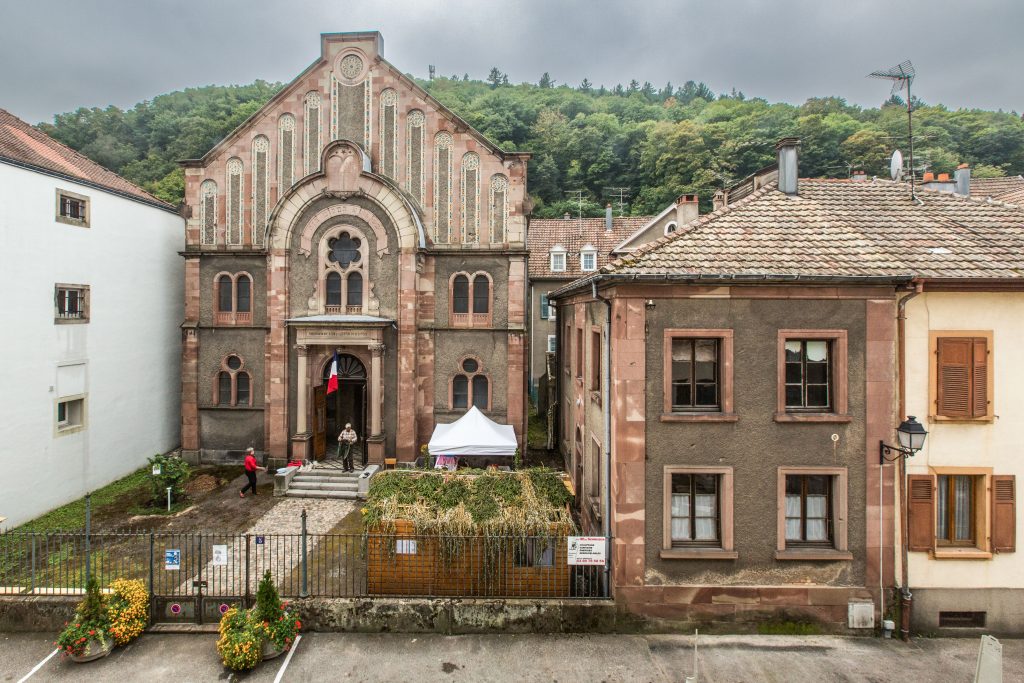A Jewish community existed in Thann as early as the 13th century. In 1350, sources report a Jewish street in the northeastern part of the city. This community remained important: there were indeed 630 Jews in Thann in 1885. Before the Second World War, the community amounted to 160 souls.

The Thann Synagogue was first built in 1817 in the Neo-Byzantine style. In 1859, the number of faithful exceeds the capacity of the building. The synagogue is destroyed and rebuilt by incorporating the land of the adjacent former prison. The rabbi’s house is built in the process.
In 1915, the building was partially destroyed by a bombing and renovated in 1922. Saccaged under the Occupation and transformed into a winterhilfswerk (help service to the poor established by the Nazis), the synagogue is again refurbished in 1948. It is again renovated in 1975, and since 2013 by the Association of Friends of the Thann Synagogue.
In 2014, excavations are undertaken in the courtyard of the synagogue. On this occasion was found and cleared a mikveh dating from 1860.
Until 1798, the Jews of the city were buried in Jungholtz. At the Jewish cemetery of Thann, the oldest tomb dates back to 1799, the most recent to 1916. Roger Hamon, during his work deciphering epitaphs, drew attention to the exceptional fact that in Thann many stelae were inspired by the Gothic style of the collegiate church, as if to strive to meet and be in harmony with the Catholic Church (which led him to believe that the sculptors were probably the same as those who maintained the Collegiate Church of Saint-Thiébaut Thann). It will also be noted that, contrary to the obligation imposed upon them after the annexation of 1870 to use only the German language for their inscriptions, the Jews still adopted Hebrew and French.
The old cemetery underwent a restoration operation on the initiative of the Association of Friends of the Thann Synagogue, in July 2015. A new cemetery was then built on rue d’Aspach, at Steinacker. An engraved stone stele bears the name of the Thann Jews murdered during the Shoah.
The synagogue, the mikveh, the rabbi’s house and the cemetery are listed as historical monuments since 2016.
Sources: Association of Friends of the Thann Synagogue; Wikipedia